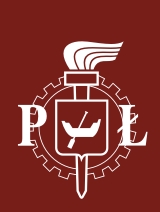
TECHNOLOGY
Generation III
Characteristics of Gen III reactors
Circumstances under that Generation III has been developing since years 80's, defined clearly goals which must be achieved to make nuclear industry competitive and attractive again. Impacts like improving nuclear safety, reducing probability of serious disasters like melting the reactor's core and decreasing cost of nuclear power plants has led to new design among reactors. [12] Improving nuclear safety was achieved by changing "safety philosophy" - the way of security systems planning. Before the reactor had been planned to be resistant to designing breakdown. Such example of breakdowns had been assumed by constructor. Now the reactor have to stand for hypothetical breakdown, assumed by nuclear oversight and described in the national and international document. [35] New requirements brought introducing inherent, passive security systems based on natural phenomena such as gravity, compressed gas pressure or convection. Probably it is the most important advantage of gen III reactors. These systems do not require any human activity or active devices (pumps, compressors powered by electricity) to avoid malfunctioning accident. Other factors improving reactor safety are: reducing power density in the core, increasing amount of water in the primary circuit, diversification in electricity sources, improving loop controls. Improvements in economic effectiveness was made by simplifying reactor's construction, standardising the design, longer reactor life, shorter construction time and many changes in organizational activity and licencing procedure. [12],[36] Although many changes were applied, the reactor operating principle is still the same. So gen III reactors are LWR (Light Water Reactors). Main features of gen III : [35],[36],[37]
Reactor, before ordering them at the commercial market have to be certified in accordance with utility requirement document set up by nuclear oversight in each country, where reactor would be installed. Although the EU is trying to harmonise requirements, each country has different basis for certification. In the EU, according to EUR (European Utility Requirement) allowed are EPR and Kerena/SWR1000 (Areva), AP1000 and BWR90 (Westinghouse), AES-92 (Gidropress), ABWR (General Electric). In the U.S. certified by NRC are US AP1000 and US AP600 (Westinghouse), ABWR (General Electric), System 80+. In process are US APWR (Mitsubishi) and US EPR (Areva). By the end of 2010, certification was given to ESBWR (GE-Hitachi).[36],[38]


-
Nuclear power industry|
Technology|
The electricity supply system aspect|
Economics|
Environment|
Public aspect|
Future|
Legislation|
References|